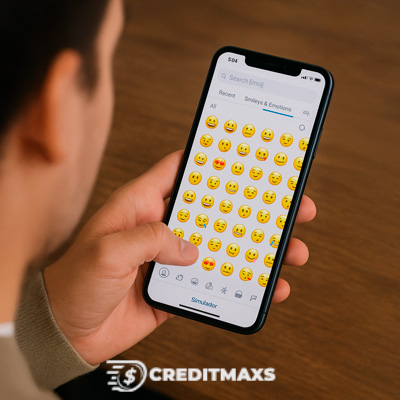Emoji Day: See What Each of These Faces Really Means
Every year, Emoji Day is celebrated on July 17, a date chosen because it appears on the calendar emoji 📅 on most platforms.
This unique celebration honors the little icons that have become a universal language of emotion, humor, and expression in digital communication.
Whether you’re texting a friend, reacting to a tweet, or captioning a photo, emojis play a huge role in how we communicate online.
But have you ever wondered what each emoji really means? On Emoji Day, it’s time to dig deeper and learn the true intent behind those familiar faces.
Emoji Day: Why July 17? 📅
Surprisingly, Emoji Day falls on July 17 due to the date shown on the calendar emoji. This small detail, originally seen on Apple devices, helped transform the day into an international celebration of emojis.
Since its first celebration in 2014, Emoji Day has gained momentum across social media, with brands, celebrities, and tech companies joining in on the fun.
On this day, Unicode Consortium, the body responsible for standardizing emojis, often announces new emoji releases or shares updates about upcoming additions to the emoji library.
It’s also a time when companies may unveil emoji-themed promotions or updates in their user interfaces.
Emoji Day: Understanding the Most Popular Emojis 🔎

Let’s face it, some emojis are used more than others. On Emoji Day, it’s fitting to break down the meaning behind some of the most frequently used emoji faces:
😂 Face with Tears of Joy
This emoji is often used to express something extremely funny. It’s one of the most tweeted emojis and has consistently ranked among the top used worldwide.
Despite its popularity, some users interpret it differently, some see it as sarcastic laughter or emotional crying.
🥺 Pleading Face
This innocent, teary-eyed emoji conveys a pleading or begging emotion. But depending on the context, it can also express gratitude, vulnerability, or even passive-aggressive tones.
On Emoji Day, it’s a perfect example of how layered emoji meanings can be.
😅 Grinning Face with Sweat
Often used in moments of awkwardness or relief, this emoji is about showing mild embarrassment or getting through a stressful moment.
Its nuance is often misunderstood, some people use it to represent nervousness, while others interpret it as pride after effort.
🤔 Thinking Face
This emoji is often used to convey contemplation, doubt, or puzzlement. Its unclear expression also makes it popular for sarcastic remarks, particularly on platforms like Twitter and Reddit.
Understanding these subtleties helps avoid miscommunication, especially in professional or intercultural interactions.
Emoji Day: Cultural and Generational Differences 💬
Not everyone uses emojis the same way. On Emoji Day, it’s important to consider the cultural and generational context in emoji usage. For example:
- Cultural Differences: In Japan, where emojis originated, certain symbols like 🙇♂️ (bowing) carry specific cultural significance tied to politeness and apology. In Western contexts, the same emoji may be seen simply as someone kneeling or praying.
- Generational Gaps: Gen Z and Millennials often use emojis differently. While the 😂 emoji is beloved by Millennials, Gen Z users may find it outdated or overused, opting instead for 😭 (Loudly Crying Face) to express laughter in an exaggerated way.
This contrast can lead to misinterpretations, especially in online group chats, work messages, or public comments.
Emoji literacy, much like language, evolves with time, and Emoji Day is the perfect opportunity to reflect on those shifts.
New Emojis and What They Represent 🚀
Every year, fresh emojis are introduced to capture the evolving ways we communicate. On Emoji Day, updates are often shared by the Unicode Consortium.
These updates aim to improve representation and diversity, as well as accommodate emerging cultural references. Recent additions include:
- Heart Hands: symbolizing love and unity
- Mirror Ball: perfect for party or disco references
- Troll: adds mythological and internet culture flavor
- Shaking Face: used for expressing shock, excitement, or an earthquake
New emojis undergo a detailed proposal and approval process. Anyone can submit a new emoji idea, and the Emoji Day spotlight often raises awareness of which proposals are being reviewed.
Enjoy Emoji Day 🤩
From hilarious moments to heartfelt emotions, emojis help bridge the gap between tone and text in digital spaces.
Whether you’re learning about the deeper meanings behind common emojis or exploring the latest releases, July 17 is a great time to reflect on how these little icons have transformed online interaction.
So next time you send a 😊 or a 🤯, remember there’s more meaning packed into those tiny pixels than you might think.
❓ Frequently Asked Questions
1. What does Emoji Day represent, and what is the reason behind its annual celebration on July 17?
- Emoji Day takes place each year on July 17 as a tribute to the digital symbols that have become a daily part of our communication.
2. Are emoji meanings the same across all cultures?
- No. Emojis are interpreted differently depending on culture, age group, and even regional dialects of language.
3. What’s the most popular emoji?
- In recent years, the 😂 Face with Tears of Joy has consistently held its place as the most widely used emoji around the world.